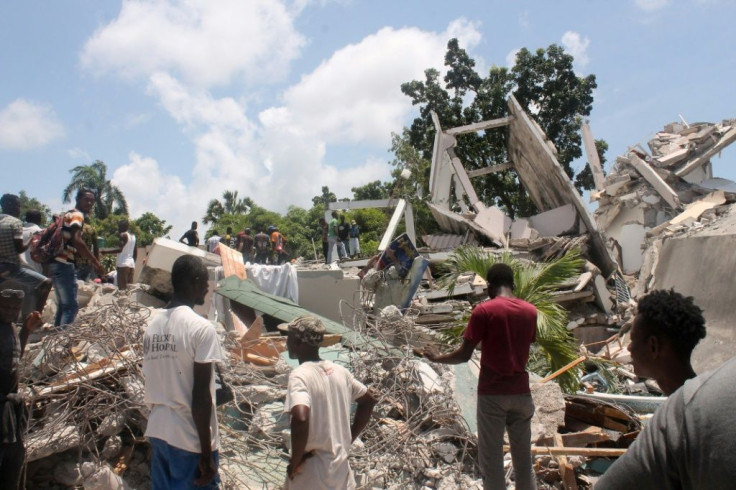Before-And-After Satellite Images Show Landslides Triggered By Deadly Haiti Earthquake [Photos]
KEY POINTS
- The 7.2-magnitude earthquake triggered landslides in Haiti
- Satellite images show the difference before and after the quake
- Tropical Depression Grace may worsen the situation with heavy rains
A set of satellite images shared by NASA shows the impact of the Haiti earthquake on a mountainous area. The agency says the situation may worsen by Tropical Depression Grace, which hit the Caribbean nation Monday.
Haiti was devastated by a deadly 7.2-magnitude earthquake Saturday, with its epicenter just about 60 miles west of the historic 2010 earthquake, NASA Earth Observatory said Monday. Both quakes happened along the Enriquillo-Plantain Garden fault and this time, the earthquake affected a mountainous area "between Petit-Trou-de-Nippes and Aquin," the agency noted.
In the satellite images shared by NASA Earth Observatory, one can see the stark difference in the area around southwestern Haiti's Pic Macaya National Park before and after the quake.
In the first image, taken in January, one can see the mountainous area on a clear day.

A second image, captured by the Operational Land Imager (OLI) on NASA and the U.S. Geological Survey's (USGS) Landsat 8 satellite, shows the same area on the day of the earthquake. In the image, one can see just how differently the area looked after the quake, with the once green areas showing signs of landslides.

The images show that many of the landslides seemed to have happened in "sparsely populated areas." It's possible that landslides also happened in other areas, but the cloud cover on the day prevented the satellites from capturing the extent of the damage, the agency noted.
Unfortunately, the situation may even be aggravated in the coming days due to heavy rains expected from tropical depression Grace. This could complicate the response efforts even further, with the already impassable roads possibly incurring further damage from the rains.
"Some hillslopes that have been destabilized by the earthquake but did not become landslides may be pushed past the limit of stability by the rain, leading to further landslides," landslide expert at NASA's Earth Applied Sciences Disasters Program, Robert Emerson, said.
"Debris and rock already mobilized by the earthquake may be transported by flash flooding as devastating debris flows. The material is mostly at the base of hills currently, but rivers quickly filled by rain could push that downstream and cause severe impacts to communities living farther from the location of the landslides," he added.
Over 1,400 people have died, 6,900 have been injured, while hundreds of others are still missing in the aftermath of the quake, the United Nations Office for the Coordination of Humanitarian Affairs (OCHA) said in an update Monday.
Over 37,300 homes were also destroyed and 46,000 sustained damages, leaving thousands of people homeless.
"In the context of the COVID-19 pandemic, the displacement of thousands of people poses additional health risks as physical distancing, screening and treatment of COVID-19 will be a significant challenge in a country where less than 1% have received their first jab of the COVID-19 vaccine, with vaccinations against COVID-19 having only just started with arrival in mid-July of 500,000 Moderna doses," OCHA said.

© Copyright IBTimes 2025. All rights reserved.






















